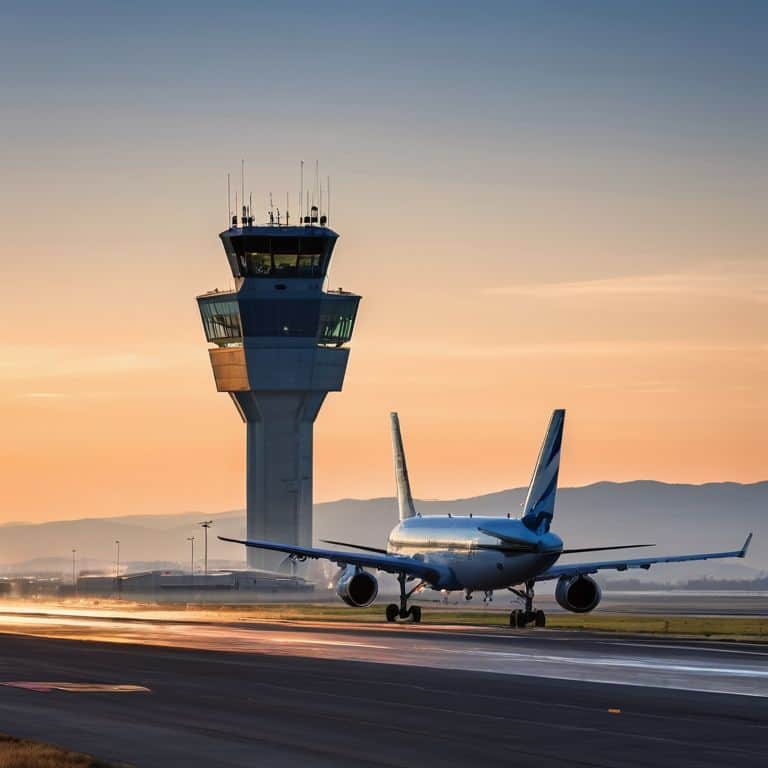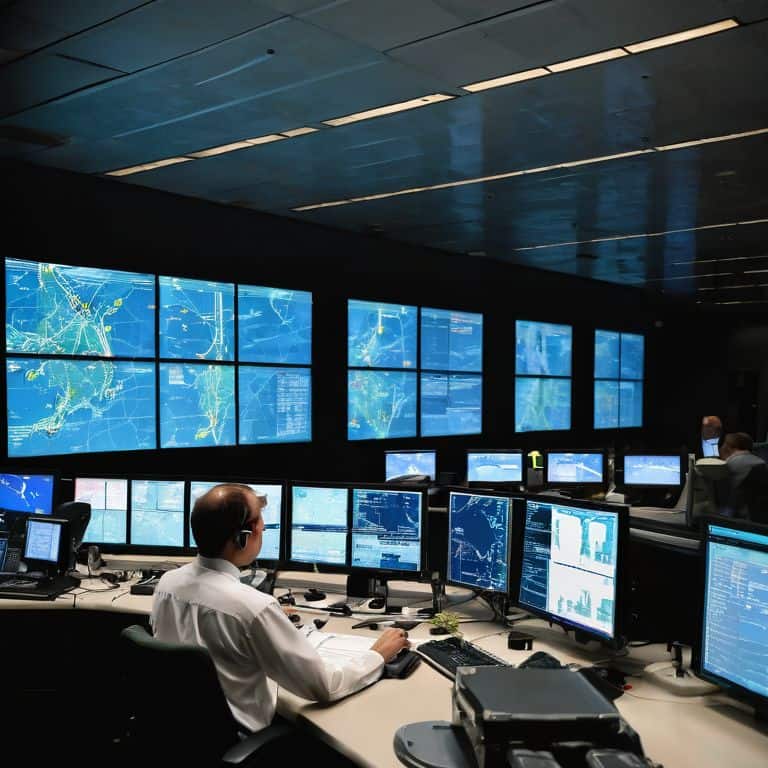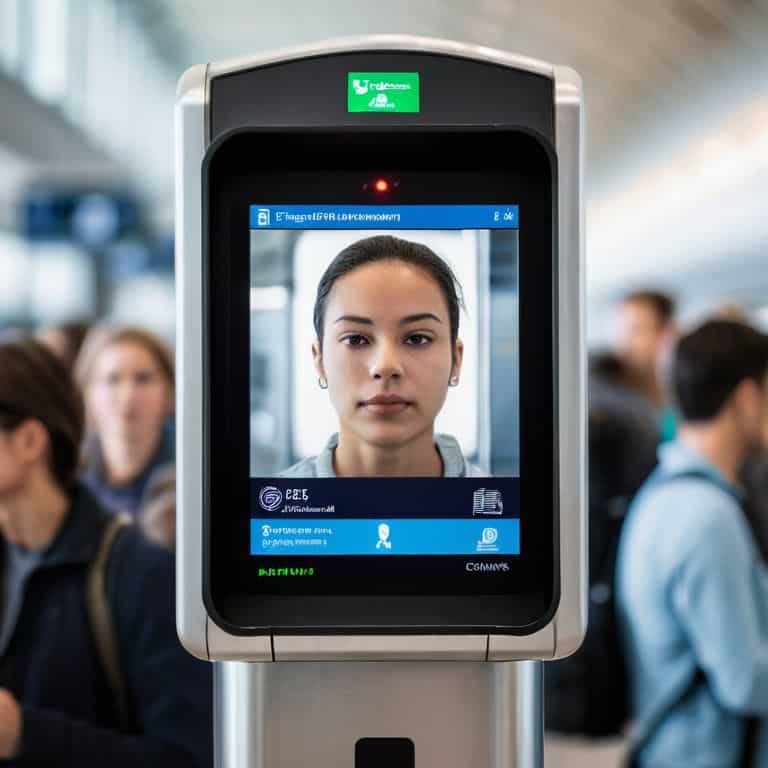As I stand on the airport’s observation deck, watching planes take off and land with precision, I’m reminded of the often-overlooked backbone of aviation: the future of air traffic control. It’s astonishing how many people still believe that the key to efficient air travel lies solely in fancy new aircraft or alternative fuels. While those are crucial, I’ve spent my career studying the intricate dance of ground operations, and I can tell you that the real magic happens in the unseen logistics. The way planes are routed, the allocation of gates, and the synchronization of takeoffs and landings – these are the elements that truly make or break the efficiency of air travel.
In this article, I promise to take you beyond the hype and into the nitty-gritty of what’s really shaping the future of air traffic control. I’ll share my experience as a systems consultant, highlighting the innovative designs and smarter systems that are revolutionizing the way we manage our skies. From automated air traffic control systems to advanced passenger flow management, I’ll provide you with a no-nonsense look at the improvements that are making modern flight possible. My goal is to show you that the future of aviation isn’t just about flashy new tech, but about the careful optimization of the systems that support it.
Table of Contents
- Beyond the Radar
- Advanced Air Traffic Management Systems Unveiled
- Impact of Artificial Intelligence on Atc Efficiency
- The Future of Air Traffic Control
- Next Generation Technologies for Global Modernization
- Single European Sky Initiative Benefits Explained
- Navigating the Skies of Tomorrow: 5 Key Tips for the Future of Air Traffic Control
- Revolutionizing the Skies: 3 Key Takeaways
- Shaping the Skies of Tomorrow
- Embracing the Future of Air Traffic Control
- Frequently Asked Questions
Beyond the Radar
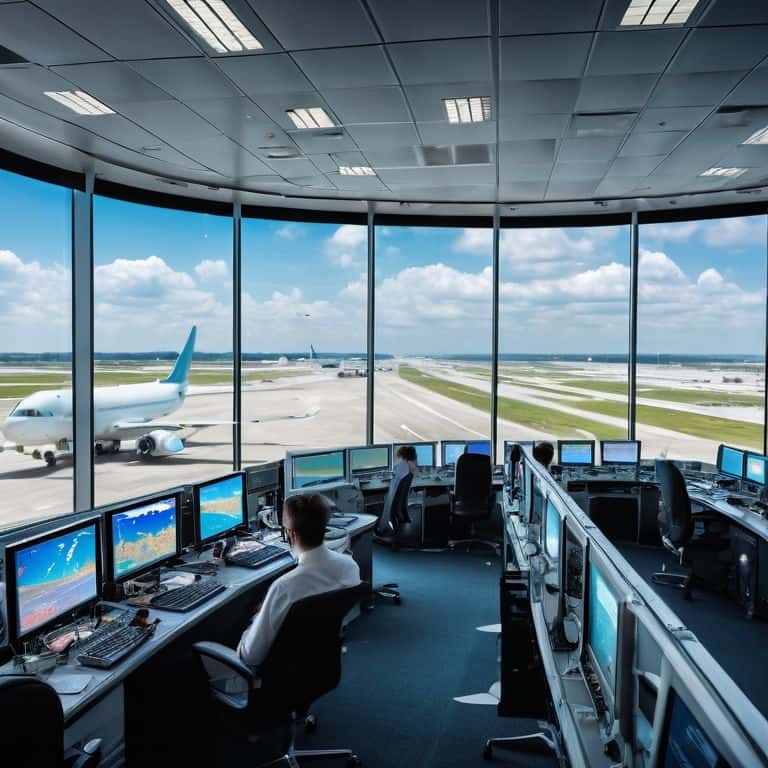
As I delve into the world of air traffic control, I’m fascinated by the advanced air traffic management systems that are being implemented globally. These systems are not just about managing air traffic; they’re about creating a seamless, efficient, and safe experience for all stakeholders involved. From the Single European Sky initiative to the Next Generation Air Traffic Control technologies, the goal is to streamline operations, reduce congestion, and minimize delays.
One of the most significant factors influencing this transformation is the impact of artificial intelligence on ATC. AI is being leveraged to analyze vast amounts of data, predict potential bottlenecks, and optimize air traffic flow. This not only enhances safety but also reduces the workload of air traffic controllers, allowing them to focus on more critical tasks. The benefits of automated air traffic control systems are numerous, including increased accuracy, reduced response times, and improved decision-making.
The global air traffic control modernization trend is gaining momentum, with many countries investing heavily in new technologies and infrastructure. As someone who enjoys watching airport ground operations, I can appreciate the complexity and beauty of these systems. The benefits of automated air traffic control systems are clear, and it’s exciting to think about how they will shape the future of aviation. With the integration of AI and advanced management systems, we can expect a significant reduction in delays, increased safety, and a more efficient use of resources.
Advanced Air Traffic Management Systems Unveiled
As I delve into the world of advanced air traffic management systems, I’m excited to explore the cutting-edge technologies that are transforming the way we manage our skies. From automated decision-making to real-time data analysis, these systems are revolutionizing the efficiency and safety of air travel.
The implementation of advanced routing algorithms is a significant step forward, enabling air traffic controllers to optimize flight paths and reduce congestion. This not only decreases flight times but also lowers fuel consumption, making air travel more sustainable and environmentally friendly.
Impact of Artificial Intelligence on Atc Efficiency
As I delve into the world of air traffic control, I’m fascinated by the potential of AI to streamline operations. By analyzing vast amounts of data, AI systems can predict flight patterns, identify potential bottlenecks, and optimize air traffic flow. This not only reduces congestion but also minimizes delays, making the entire system more efficient.
The introduction of AI-powered tools is expected to have a profound impact on ATC efficiency, enabling controllers to make more informed decisions and respond to unexpected events more effectively. By automating routine tasks, AI frees up human controllers to focus on higher-level decision-making, ultimately leading to safer and more reliable air travel.
The Future of Air Traffic Control
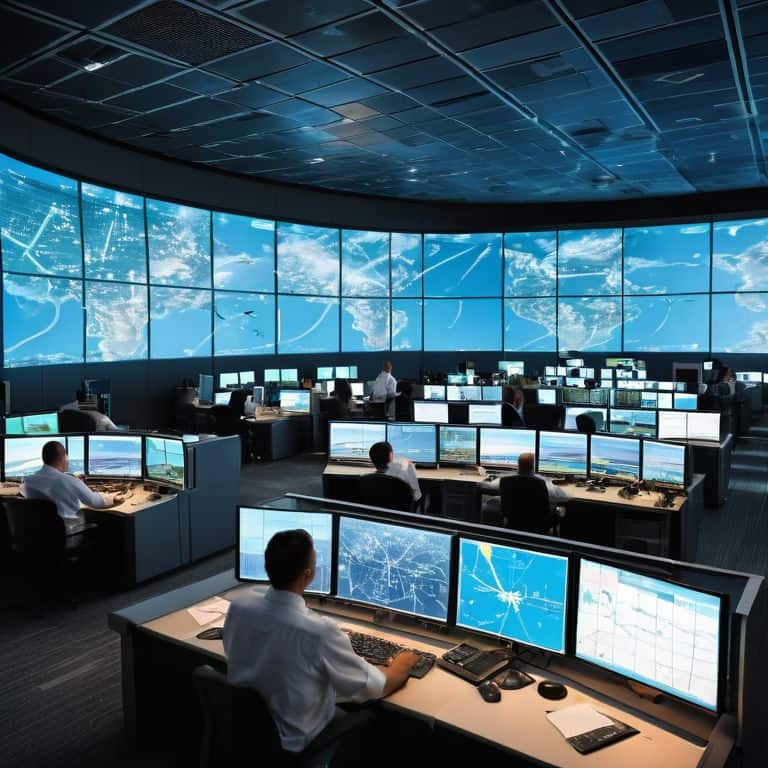
As I delve into the world of air traffic control, I’m excited to explore the impact of artificial intelligence on ATC efficiency. One key area that’s gaining significant attention is the development of advanced air traffic management systems. These systems have the potential to revolutionize the way we manage our skies, enabling more efficient and safer flight operations.
The integration of AI and machine learning algorithms into air traffic control is a game-changer. By analyzing vast amounts of data, these systems can predict and prevent potential conflicts, reducing the workload of human air traffic controllers and minimizing the risk of errors. This, in turn, enables single European sky initiative benefits to be realized, where airspace is managed more efficiently, and flights are routed more effectively.
As we look to the future, it’s clear that next generation air traffic control technologies will play a critical role in shaping the industry. With the global push towards global air traffic control modernization trends, we can expect to see significant investments in automated systems, enabling air traffic control to become more efficient, safer, and more sustainable. The benefits of automated air traffic control systems are numerous, and it’s exciting to think about the potential improvements that can be made in this area.
Next Generation Technologies for Global Modernization
As I delve into the world of next-generation air traffic control, I’m excited to explore the cutting-edge technologies that are transforming the industry. From advanced radar systems to automated flight planning, these innovations are paving the way for a more efficient and safe flying experience.
The implementation of machine learning algorithms is a significant step forward in this modernization effort. By analyzing vast amounts of data, these algorithms can optimize flight routes, reduce congestion, and predict potential hazards, making the skies safer for everyone.
Single European Sky Initiative Benefits Explained
The Single European Sky initiative is a game-changer for air traffic control, aiming to reduce fragmentation and increase efficiency. By implementing a more unified approach, European skies can become safer and more manageable. This initiative has the potential to decrease flight delays and improve overall air traffic flow.
One of the main benefits of this initiative is the implementation of advanced routing systems, which can significantly reduce fuel consumption and lower emissions. As a result, airlines can save on costs, and the environment can benefit from reduced carbon footprint.
Navigating the Skies of Tomorrow: 5 Key Tips for the Future of Air Traffic Control
- Implementing Advanced Air Traffic Management Systems to Reduce Congestion and Increase Efficiency
- Leveraging Artificial Intelligence to Predict and Prevent Air Traffic Delays
- Adopting the Single European Sky Initiative to Enhance Collaboration and Streamline Air Traffic Control
- Investing in Next Generation Technologies Such as Automated Dependent Surveillance-Broadcast (ADS-B) for Global Modernization
- Enhancing Cybersecurity Measures to Protect Against Increasing Threats to Air Traffic Control Systems
Revolutionizing the Skies: 3 Key Takeaways
I’ve seen firsthand how advanced air traffic management systems and artificial intelligence can significantly enhance efficiency and safety in air traffic control, making the future of flight more exciting and achievable
Initiatives like the Single European Sky and the adoption of next-generation technologies are pivotal in modernizing global air traffic control, and their benefits extend far beyond just streamlined operations
By focusing on the often-overlooked aspects of aviation, such as smarter logistics and innovative design, we can unlock a safer, more efficient, and sustainable future for air travel, which is what drives my passion as an aviation systems consultant and futurist
Shaping the Skies of Tomorrow
The future of air traffic control is not just about upgrading radar systems or adopting new technologies, but about orchestrating a symphony of data, logistics, and innovation to create a safer, more efficient, and more sustainable aviation ecosystem.
Oliver Byrne
Embracing the Future of Air Traffic Control
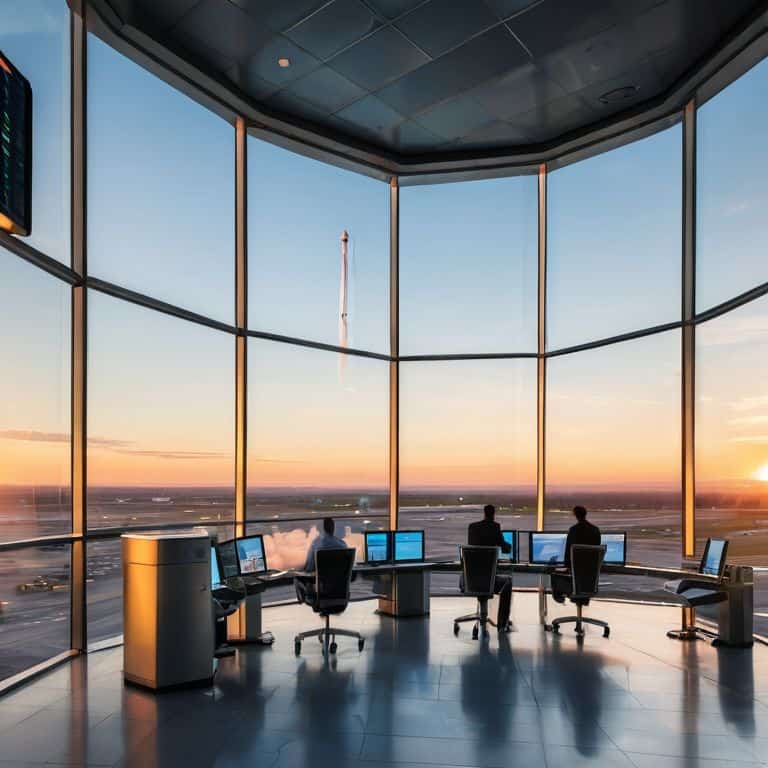
As I conclude my exploration of the future of air traffic control, it’s clear that revolutionary changes are on the horizon. From advanced air traffic management systems to the integration of artificial intelligence, the industry is poised for a significant leap forward. The Single European Sky initiative and next-generation technologies will play pivotal roles in shaping this future, offering benefits such as increased efficiency, reduced congestion, and enhanced safety. By embracing these innovations, we can create a more streamlined and effective air traffic control system that meets the demands of a rapidly changing world.
As we look to the future, it’s exciting to consider the potential of seamless air travel experiences. With smarter systems and innovative designs, we can create a world where air traffic control is not just about managing planes, but about crafting exceptional passenger experiences. By continuing to push the boundaries of what’s possible, we can unlock a future where air travel is faster, safer, and more enjoyable for everyone involved. The future of air traffic control is not just about technology; it’s about reimagining the skies and all the possibilities they hold.
Frequently Asked Questions
How will the integration of artificial intelligence and machine learning impact the role of human air traffic controllers?
As AI and machine learning integrate, human air traffic controllers will focus on high-level decision-making, while automated systems handle routine tasks, enhancing safety and efficiency. I’ve seen this firsthand in my consulting work, where AI-assisted tools have freed controllers to concentrate on complex situations, resulting in smoother air traffic flow and reduced delays.
What are the potential security risks associated with the increased use of automated systems in air traffic control?
As I see it, increased automation in air traffic control also introduces new security risks, such as potential cyber threats and system vulnerabilities. It’s crucial we implement robust safeguards and regular updates to protect these systems and ensure the integrity of our airspace.
How will the Single European Sky initiative be implemented globally, and what are the expected benefits for international air travel?
As I see it, the Single European Sky initiative will pave the way for global adoption by sharing best practices and standards. This could lead to streamlined air traffic management worldwide, reducing congestion and emissions, and making international air travel faster, cheaper, and more efficient.
